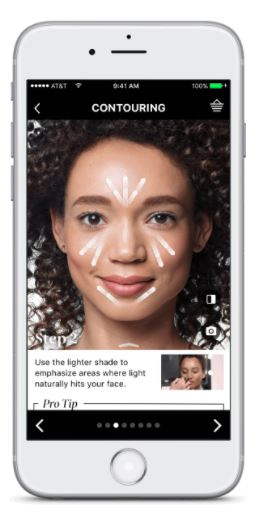Augmented Reality is the new wave that is sweeping the digital world. With most of the big tech companies working on their own AR wearables, the technology which infuses graphical data with the physical world to create a new enhanced reality, is set to become prominent over the next decade. While AR wearables are in the works, AR is currently limited to smartphones. Yet, ARs impact has been tremendous. Last year we witnessed the influx of AR-powered apps and the trend has just begun.
Augmented Reality has given a new dimension to UX and will raise the bar for UX Design. In 2017, Silicone-valley giant Apple launched ARKit, their own AR-development framework which makes designing AR apps for Apple devices easier.
Currently, the most popular and well-known app that uses AR technology is the image-sharing platform Snapchat. It is the power of AR which made the funky photo filters on the app possible. Another big AR-driven success was Niantic’s gaming app Pokemon Go which got kids out of the house, walking around to catch fictional Pokémon in physical locations like parks, playgrounds, etc.
With the rise of AR’s influence on apps and the emergence of new development frameworks like ARKit, UX Design is set to become more immersive, engaging, and interactive. AR not only simulates reality but also enhances it. User journeys will be more complicated with the involvement of 3D elements. UX design will have to adapt rapidly to changing time and tackle new challenges. New practices will need to be adopted in order to deliver delightful UX. UX’s top practices for AR-powered design will be:
• Prioritising and comprehending the user’s environment in the best possible way.
• Not just designing AR-integrated apps but delivering a magnificent experience to the users.
• Making the interface as seamless, natural and comfortable for the users.
• Understanding the user, his physiological make-up, and his environment to deliver a more accurate, real and personalized experience will be what UX Design would strive for.
We have already started to see the innovation resulting from the marriage between AR and UX in the industry. Here are a few to name:
• IKEA Place
-

(Source: Ikea)
Swedish furniture company IKEA launched Place in 2017, an AR-driven app that shows you how a piece of furniture would look in the spot you desire to place. The app was built using Apples ARKit and includes 3D and true-to-scale models, making furniture buying a hassle-free.
• AR View by Amazon
-

(AR View in use. Source: Amazon)
Similar to Places, AR View was developed using ARKit and helps the user get an idea of how an object such as toys, electronics, furniture, etc, would look in a given spot.
• Sephora Virtual Artis
-

(Users can try different options and looks as well as learn more about cosmetics. Source: Sephora)
Make-up and beauty store-chain Sephora also harnessed the magic of AR to help its customers try make-up in the comfort of their homes. Sephoras Virtual Artist scans your face and lips and shows you how a cosmetic product would look on you. This also helps boost their overall sales.
These apps are just a glimpse of what is about to come. AR will transform online shopping eventually. Most e-commerce companies are looking to integrate virtual trail rooms, virtual shoe sampling and furniture sampling with the use of AR in the near future. Moreover, global giants have already begun investing heavily in AR and VR technology. Facebook has already invested in over 11 AR/VR companies through its subsidiary Oculus. Other big leagues like Amazon, Intel, Comcast, HTC, Samsung, etc, have also made investments in developing AR/VR. Moreover, according to market research firm IDC, the global revenue for the augmented reality market and virtual reality market is set to hit $143 million by 2020.
As this new wave takes over the digital realm and arguments our very concept of reality, it will revolutionize user interaction and customer experience by making it more realistic and data-driven. We at TECHVED have already begun to build a futuristic world in the new dimension of UX and take users on AR-driven journeys. Its time to upgrade to the reality of AR/VR!